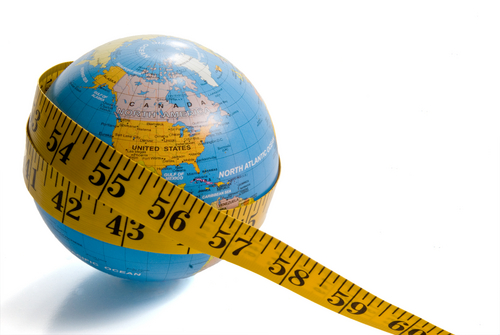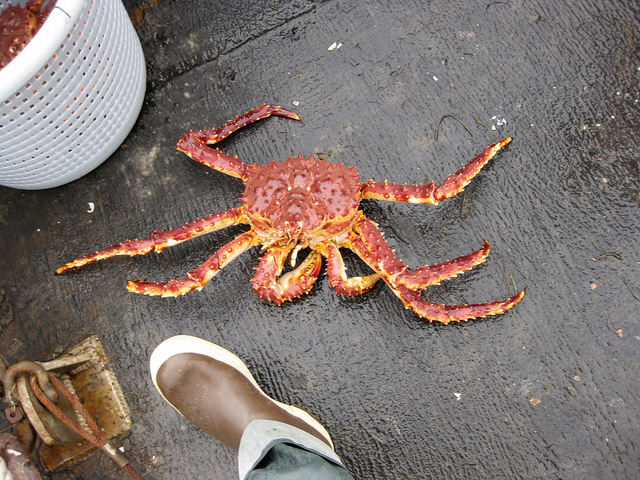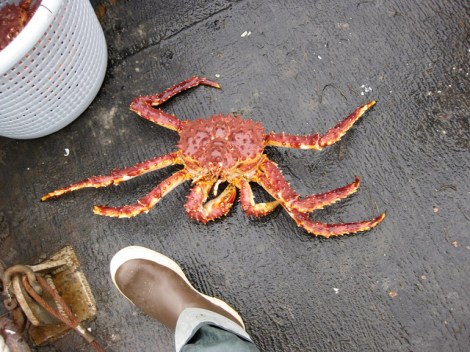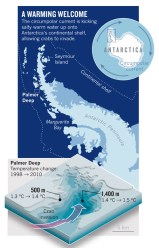The Antarctic is being invaded by king crabs — and, somewhat ironically, it’s because they survive better in warmer water.
From Nature:
Cold temperatures have kept crabs out of Antarctic seas for 30 million years. But warm water from the ocean depths is now intruding onto the continental shelf, and seems to be changing the delicate ecological balance. An analysis by [marine ecologist Craig] Smith and his colleagues suggests that 1.5 million crabs already inhabit Palmer Deep, [a] sea-floor valley … And native organisms have few ways of defending themselves. “There are no hard-shell-crushing predators in Antarctica,” says Smith. “When these come in they’re going to wipe out a whole bunch of endemic species.”
Scientists are asking for volunteers to help stem the invasion; the research team will provide melted butter and nutcrackers.
Crustaceans like crabs and lobsters have a strange reaction to particularly cold water.
At temperatures below about 1 °C, they become unable to regulate magnesium in body fluids, leading to narcosis, clumsiness and paralysis of breathing. Most of the 100 or so fish species currently found on the Antarctic shelf belong to a single sub-order, whose members evolved antifreeze proteins to keep their blood flowing at subzero temperatures and then diversified to fill most niches in the frigid seas. They lack powerful jaws.
As ocean temperatures have risen, so have temperatures in the Palmer Deep.
Westerly winds are strengthening and the circumpolar current is intensifying, driven by atmospheric warming and a hole in the ozone layer over Antarctica. These changes are lifting warm, dense, salty water from 4,000 metres down in the Southern Ocean up over the lip of the continental shelf.
[A]s the circumpolar current skirts Antarctica’s continental shelf, it runs head-on into the steep wall of the trough. About once a week, a swirling eddy containing 100 cubic kilometres of warm water wafts up from that collision, spilling onto the continental shelf. The same thing happens elsewhere, says [oceanographer Douglas] Martinson: “It looks like this is what happens at all of the canyons that cut across the shelf.”
The temperature of this intruding water is only about 1.8 °C — but for an ocean region generally between 1 and −2 °C, the impact is substantial. And the incursion seems to have begun only recently, says Eugene Domack, a marine geologist at Hamilton College in Clinton, New York, who led the 2010 cruise to Palmer Deep. … Average water temperatures west of the Antarctic Peninsula have risen by 1 °C in the past 50 years, and continue to rise by 0.01–0.02 °C per year.
And that warmer water means crabs can now better survive, stepping into an ecosystem unable to protect itself against the invasion.
The grimmest part of the story, though, may be this quote from Florida Institute of Technology marine biologist Richard Aronson.
“Every time we make a prediction of what we think will happen in the next 50 years, then poof, 10 years later, there it is,” he says. “So I think this is going to be happening more rapidly than, as conservative scientists, we’re used to predicting.”






